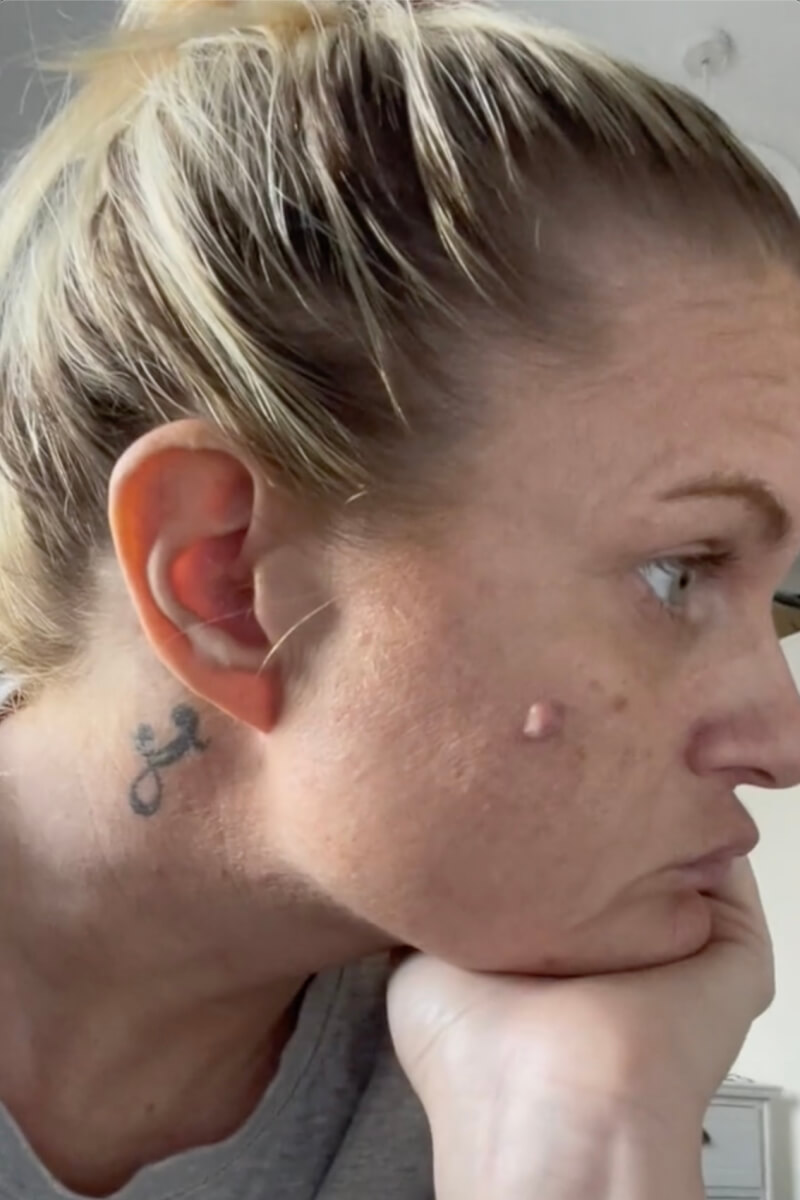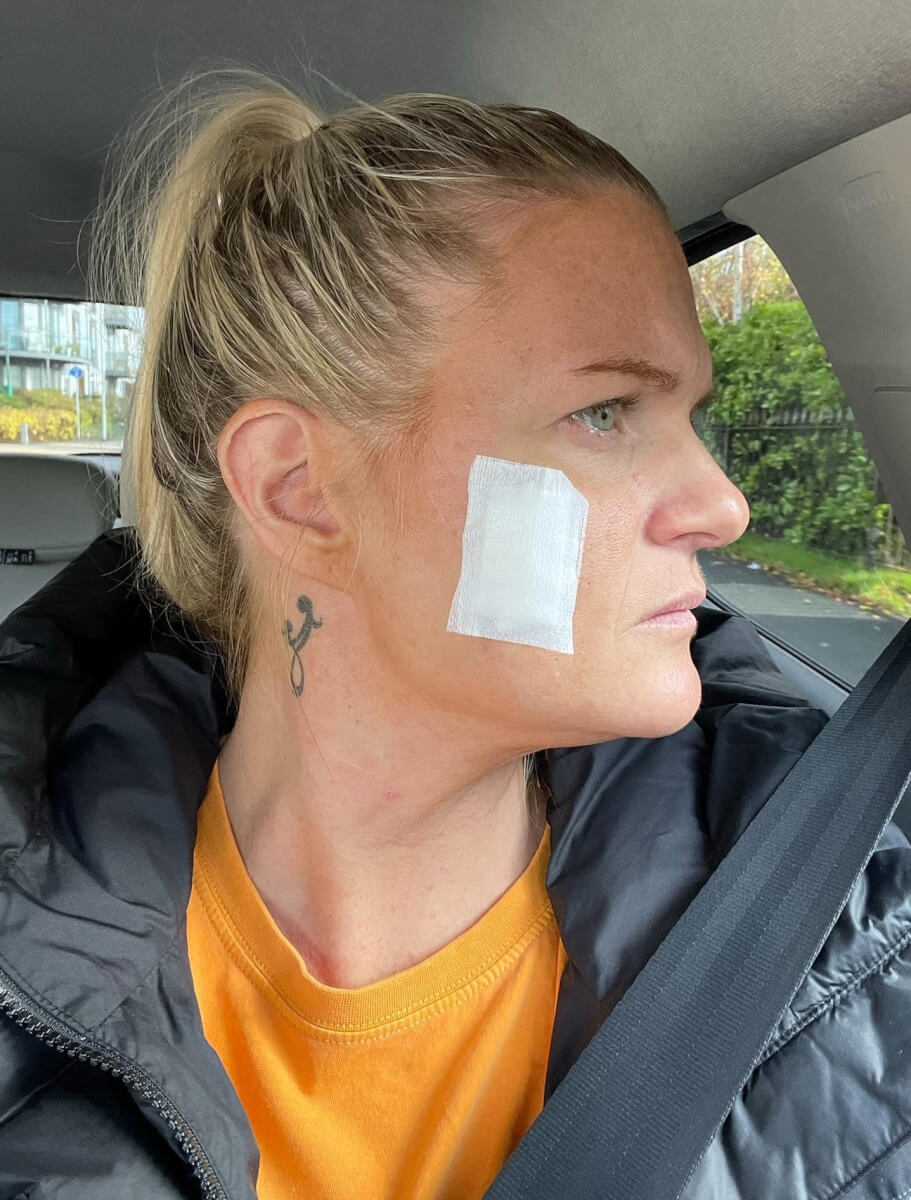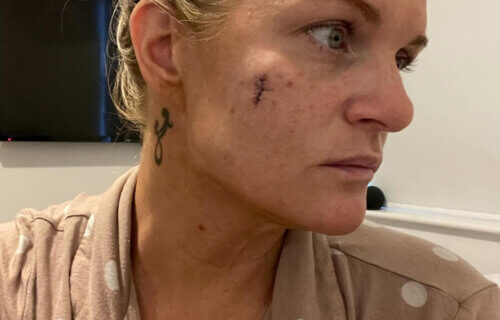COLCHESTER, United Kingdom — A woman who says she’s survived skin cancer twice due to her use of sunbeds has introduced a fake tanning product to advocate for “safe tanning.”
At the age of 42, Lisa Costello unveiled the fake tan mousse product after she “learned the hard way” about the dangers of tanning beds. She was diagnosed with skin cancer on two separate occasions before reaching the age of 40.
From her teens to her early 30s, Lisa was passionate about maintaining a tanned appearance, often referring to herself as an “aggressive sunbed user.” However, the entrepreneur says her extensive tanning habits caught up with her in 2018, when she was diagnosed with melanoma, and once again in 2021.
Following her diagnoses, Lisa dedicated herself to promoting proper skin protection. She launched a tanning product that she asserts is “100%” safe for everyone to use.
“After I was diagnosed, I felt this urge to just keep pushing safe tanning and no one was pushing it with my message,” Costello says in an online video post.

Lisa notes she started tanning when she was only 15 years-old and was using the UV tanning beds twice a week. When she got older, she reduced that to twice a month. After years in sunbeds, the driving instructor from Colchester in Essex was diagnosed with skin cancer in December 2018.
“I found a mole I didn’t like so went to GP. they referred me to a dermatologist and two weeks later it was taken off. I waited six weeks for the results… It was melanoma (stage 1),” Costello explains.
💡What Is Melanoma?
- Melanoma forms when melanocytes, the cells that produce pigment in your skin, grow abnormally.
- While less common than other skin cancers, it’s more dangerous because it can spread to other organs.
- In women, it’s most common on the legs, while in men, it’s often found on the back.
Following a wide local excision surgery — which removes an area of diseased tissue — she received the all-clear in January 2019. Fast-forward to 2021, unfortunately, and Lisa was hyper-aware of the moles on her body and was checking them “religiously.” In February, she noticed another change on her skin and went to her doctor.
“They referred me again within two days I was back in my dermatologist’s office and then two days after it was taken off. I waited one week for the results and then got the dreaded ‘no caller’ ID on my phone. It was the hospital asking me to go in and talk about my results. The next day I was there and received the news it was another melanoma! This time stage 0 (in-situ) I had got it even earlier now!”

Since then, Lisa has had six more moles removed that have all been benign (non-cancerous). On top of her own battles with skin cancer, her father passed away in 2011 due to the same condition — motivating her to act even more.
“In 2011, my dad found a mole that his doctor didn’t like the look of, so he had it taken off, it came back as melanoma,” the 42-year-old says. “He was checked for three years every three months but unfortunately in June 2015 he fell really ill. He went to A&E, and they found a 3.5 cm brain tumor on the right side of his brain… it was melanoma! He died five months later.”
With her new business venture, Lisa wants to change people’s views on tanning and raise awareness about melanoma — the most aggressive type of skin cancer.
“It took me nearly a year from the idea to the launch to get it all done. At the moment, it’s still very small but it’s very early days and I will continue to push the tan along with the message. My aim is to change people’s view on tanning and just to appreciate how dangerous melanoma is!”
Tanning beds linked to skin cancer development
According to a 2020 report, the risk of getting skin cancer from tanning beds or sunbathing appears to be much worse than many think. Scientists at Washington State University discovered that exposure to ultraviolet (UV) light triggers multiple mutations.
The study found that exposure to DNA-damaging ultraviolet light used in tanning beds could cause malignant melanoma, the deadliest form of skin cancer. Their research also discovered a single intense dose to ultraviolet-B radiation, coming in sunlight, is enough to cause abnormal mutations.
South West News Service writer Barney Riley contributed to this report.

